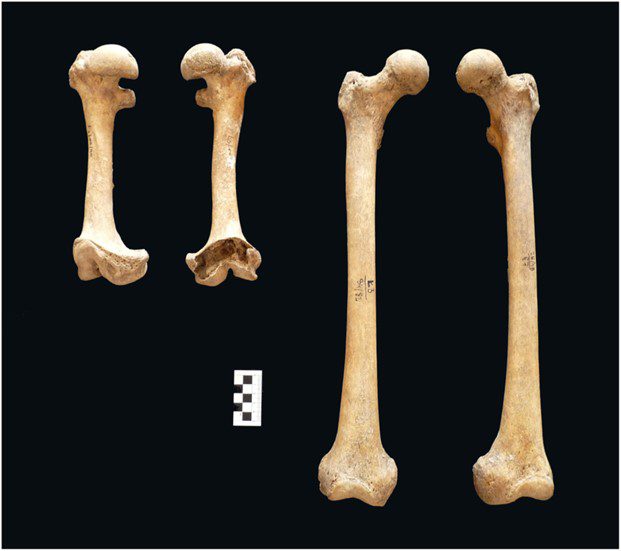The remains of a medieval man, found at a monastery in Poland, have revealed he had two different forms of dwarfism, the combination of which has never been reported before in the medieval period in Central Europe.
The skeleton is believed to date from between the ninth and 11th centuries CE and was discovered in Łekno, Poland, in the 90s. Named Ł3/66/90, the man was aged 30–45 years at the time of his death, and is just the third example of a skeleton with dwarfism ever discovered in Poland.
Previous research has revealed the man had lived with achondroplasia – a form of short-limbed dwarfism – and now, another study suggests he also had a second type of skeletal dysplasia, Léri-Weill dyschondrosteosis (LWD). Skeletal dysplasias are inherited conditions, of which there are more than 450, which affect bone, cartilage, muscles, tendons, and ligaments.
“While achondroplasia has been the most commonly found dysplasia in archaeological record, only a few cases of LWD have been diagnosed,” the authors of the study write. “Ł3/66/90 is the first case of achondroplasia and LWD from the medieval period in Central Europe.”
As well as these two types of dwarfism, the researchers believe the man also had ulnar hemimelia, which is a congenital condition characterized by complete or partial absence of the ulna bone in the forearm. This unique combination of disorders, they write, “has never been reported previously in the bioarchaeological literature”.
To identify his one-of-a-kind genetic tapestry, the team generated 3D models that allowed them to study the shape of the man’s bones. This was actually the first time such modeling had been used to document a case of dwarfism. As is characteristic of an individual with achondroplasia, they found he had skull abnormalities, short and thickened ribs, and shortened limbs.

His short stature, arched dental palate, and angled forearm, meanwhile, could be evidence of LWD. And the fact that his right ulna was much shorter than his right radius and left ulna, suggests he also had ulnar hemimelia.
While individuals with two types of dwarfism have been reported in more recent years, this is the first time it has been seen in an ancient skeleton, Francesco Galassi, a paleopathologist who was not involved with the study, told Live Science. As such, the paper’s findings are likely to be illuminating for those studying medieval health and disease.
“This example is used here to provide insights on a variety of different diseases, syndromes, and conditions in Polish medieval populations,” the authors write. “That will help in future identification of rare diseases from archaeological sites.”
The study was published in the International Journal of Osteoarchaeology.
Source Link: Medieval Skeleton Reveals Man Who Lived With Two Kinds Of Dwarfism